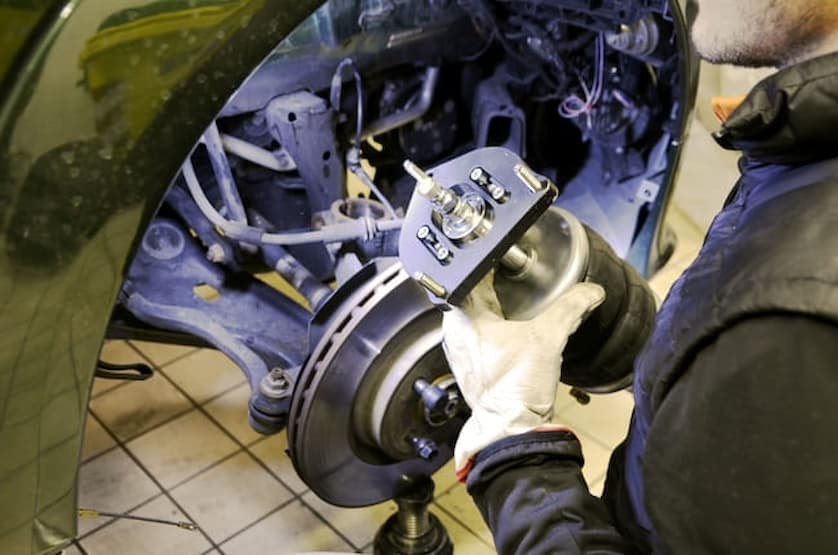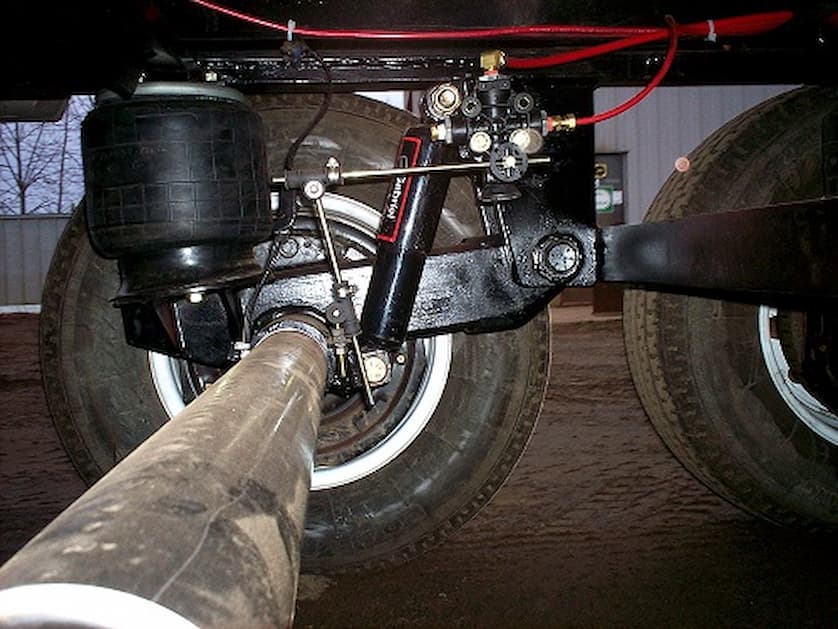What do the Land Rover Defender, the BMW X5 and Mercedes Benz GLS have in common? Besides being luxurious SUVs and buttered with 6-figure price tags, all of them have factory-fitted air suspension. A simple flick lets you lower or raise your car to suit the road conditions and your driving style. Handling, stability and vehicle dynamics are improved on highways without compromising on comfort. After all, all those horses need to go somewhere. And the same applies when off-road – each wheel can be adjusted (manually or automatically) to offer a raised ride height or more traction on looser surfaces.
If you want the same convenience, comfort and superior handling, but don’t want to sell an arm and a leg, a bespoke airbag suspension kit is also sold for everyday cars. With the right parts and a few tweaks to the vehicle’s stock suspension, airbag kits can completely transform your sedan, hatch, van, ute or 4WD.
Contents
What is Air Suspension?
Traditional suspension setups consist of a combination of shocks, coils or leaf springs, bars or connecting arms that suspend the vehicle over the wheels. This is what makes accelerating, braking and turning possible without the car being thrown around in every imaginable direction. Air suspension is similar in that it does way with the coils or springs, and instead has bellows or airbags filled with pressurised air. The convenience here is that it only takes a press of a button to fill those bellows to get the car higher or release air to set It lower. By doing so you adjust the handling for the type of terrain you’re driving on.
Parts and How Things Work

Airbags made of strong rubber are the main parts of any air suspension setup. Many types have metal bases at either end and fit over the shock absorber much like a traditional coilover. Others work independently of the shocks. Airbags can withstand extremely high pressures, and most will be rated to carry at least a ton over each wheel. So no, they can’t be popped.
Modified shocks with internal valves and reinforced bracket plates allow for easier adjustment to air pressure, and cars with performance in mind, changes to the damping levels and camber adjustments when going lower. This makes air suspension comparable to, or even better than traditional coilover systems, in that you can combine both comfort and superior handling without the typically firm setup.
To get air into the airbags, you’ll need a compressor that is fed air through rated valves (or solenoids) and airlines from an air tank. This houses pressurised air and can inflate airbags in a matter of seconds. A range of sensors monitor ride height and adjust the pressure in the airbags accordingly. Electronic controllers do the work for you, or you can get manual controllers if you like the hands-on approach. Parts and designs may differ depending on the type of airbag suspension kit you’re after.
Types of Air Suspension

The system described above is a full air suspension setup fitted to vehicles with coil springs. This can be to the front or rear axle and in most cases, both, depending on what you have on the vehicle. Cars with leaf springs benefit from air suspension load assist kits. These often consist of two airbags fitted between the chassis and rear axle and support the existing rear leaf spring.
Here the airbags are usually designed to work independently of each other, so adjustment allows for flexibility when loading your ute, van or 4WD. There’s the same option of manual or digital controllers as in a full airbag suspension kit to inflate or deflate the airbags to the desired pressure and height. With fewer parts, these are also a cost-effective way to retain handling and safety when the vehicle is fully loaded.
Air suspension can also go on other vehicles. Motorcycles take advantage of a plusher ride and improved braking and handling with integrated airbag and shock combos at the rear wheel. Trailers can be easily lowered for loading and unloading, and the height adjusted while driving. There’s more stability and towing heavier trailers or caravans is easier.
Advantages of Air Suspension Kits
Let’s first describe the benefits of load assist kits and work up to full-air suspension setups.
For leaf sprung vehicles, the obvious benefit is that you can maintain the vehicle level at all times. Don’t embarrass yourself with a sagging rear end. A quick flick inflates the airbags and raises the vehicle even with heavy loads. And a balanced front and rear axle means more traction through the tyres, easier turning and braking and a better pickup of speed. There’s less stress in the springs and tyre wear is brought to a minimum. What’s more, you raise the safe loading limit of the vehicle.
Full air suspension kits are a staple on luxury and performance cars for a reason. They improve ride quality, allow for different ride heights, and can firm up the suspension with more air forced into the airbags when you need to absorb road imperfections at speed. There’s less body roll in turns, and stability is improved. Braking is also safer and more controlled. Dialling down the pressure makes the ride plusher, but the vehicle still retains exceptional handling.











